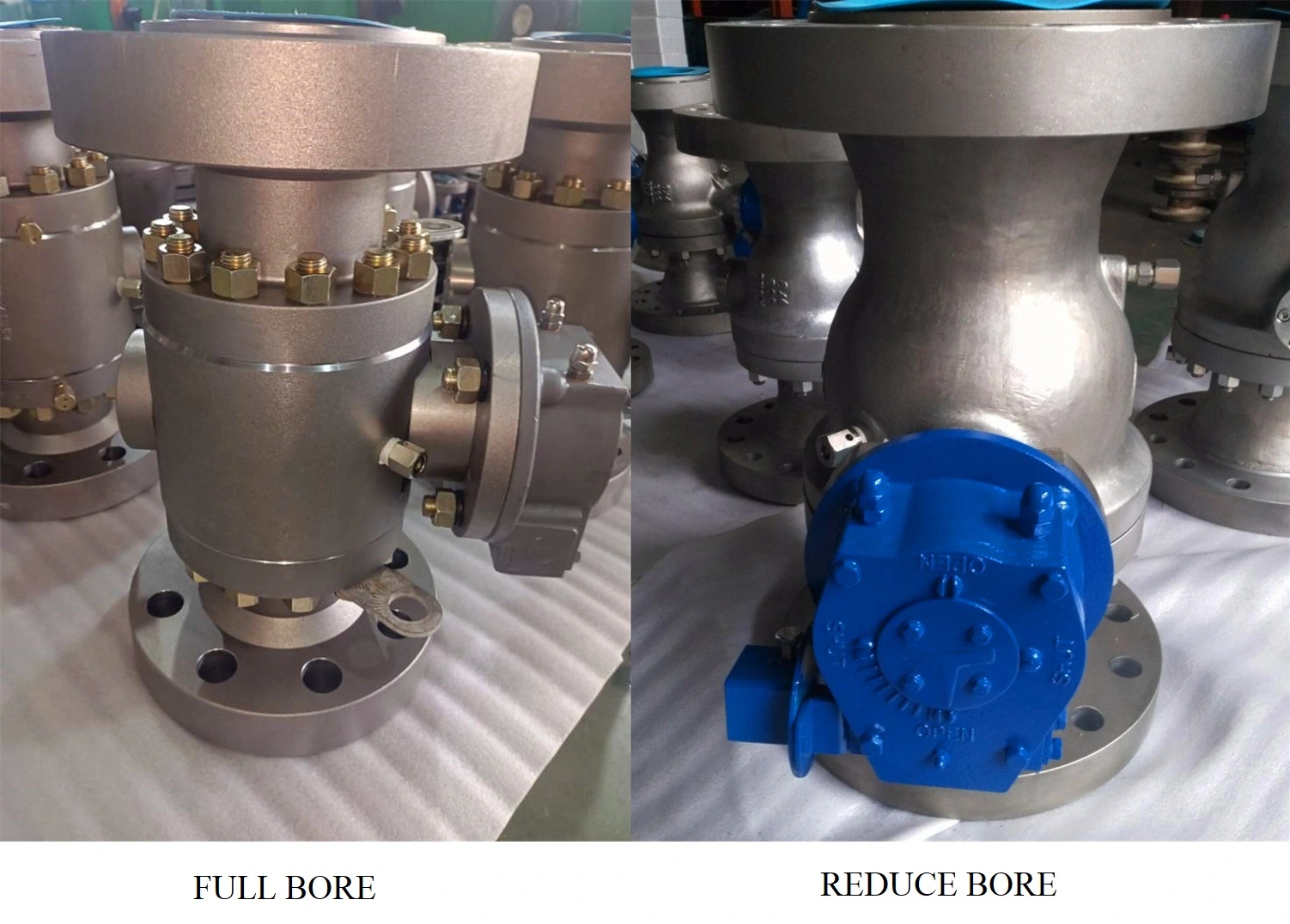The ball valve is currently the most widely used mechanical product in all valve markets, which is mainly composed of the valve body, valve seat, ball, stem and transmission device, through the executive device to drive the ball core rotation. It will achieve the function of switch or adjustment. In chemistry, environmental protection, water treatment, urban construction, machinery, food and other industries, it is widely used. It is very popular.
There are many kinds of ball valves through the structure form, connection mode, pressure grade, driving form, etc. They can be combined into all kinds of different functions of the product, but basically the ball valve has two categories. One is the full bore ball valve, the other is the reduced bore ball valve. In general, the inner bore of ball valves is less than or equal to 85% port inner bore of ball valves. They are known as reduced ball valves, and the inner bore of ball valves is greater than 95% port inner bore of ball valves. They are known as full-bore ball valves. Therefore, what are the differences between the two kinds of ball valves in terms of the selection or applications?
Definition
1. Full bore ball valves are for the width of the channel, that is to say, all is the same from the flow into the flow out of the channel size. Its size can not be less than the standard value.
2. The flow channel inlet of reduced bore ball valves is wider than the flow channel bore, which the actual flow channel bore is about one specification smaller than the specification. For example, DN50 reduced bore ball valve flow to the bore of about 38, which is roughly equivalent to the specification of DN40.
Applicable medium
1. The full bore ball valve is generally used for conveying viscous and slagging medium pipelines. A full bore ball valve has a larger opening and allows for a greater flow rate, making it a good choice for applications where high flow rates are necessary. Because of its small fluid resistance, it can be said that there is basically no flow resistance, which can facilitate the regular wax scraping and purging device through. If your system requires a high flow rate and you don't need precise control over the flow, then a full bore ball valve may be the better choice.
2. The reduced bore ball valve is suitable for conveying gas or physical properties similar to water medium on the pipeline, because its weight is about 30% lighter than that of the full bore ball valve, and its flow resistance is only about 1/7 of the same caliber of globe valves. It is beneficial to reduce pipeline load and reduce cost. If you need to control the flow rate more precisely, a reduced bore ball valve may be more appropriate.
Applicable technology
1. For the need for regular pigging of the pipeline, no matter what kind of medium, we must use the full bore ball valve. Medium which is through the full bore ball valve does not reduce flow, and low flow resistance is ideal for pipe control, especially in demanding conditions. Especially in the oil pipeline and gas pipeline in the main line to be buried in the underground, we must use full bore welded ball valve.
2. The reduced bore ball valve is suitable for some requirements that are not high. A reduced bore ball valve has a smaller opening, which can restrict flow but also provides greater control over the flow rate. When the inner bore of the valve is more than 80% larger than the inner bore of the pipe end. There is little effect on the flow capacity of the pipe. Many valves have reduced bore, which is generally controlled within 0.8. The reduced bore reduces the flow capacity of the valve, that is, the KV value of the valve, and increases the pressure drop at both ends of the valve, resulting in the loss of energy. There is no great impact on the pipeline. It may increase the erosion of the pipeline.
The comparison of advantages and disadvantages
1. Installation space: the volume of reduced bore ball valves is small, so its installation space requirements are smaller. Because its weight is about 30% lighter than that of the full-bore ball valve. It is beneficial to reduce pipeline load, reduce transportation load and reduce costs.
2. Cost: the reduced bore ball valve is one grade lower than the price of full bore ball valve. For example, DN32, DN40, DN50, DN63, DN90, DN110, DN160, DN200, DN250 and DN315 are in the same sphere. Notes: because of the smaller inner bore of the reduced ball valve, the torque on the stem is small, which is more suitable for extending the service life of the valve switch. In particular, low torque design for large bore valves. However, the bore can not be reduced too much, otherwise the system resistance will increase. If the bore is not reduced, it can increase the purchase cost, and generally reduce the valve control characteristics so that the adjustment effect becomes worse. For example, if the regulator is always used in a small opening, it will reduce the service life of the valve.

